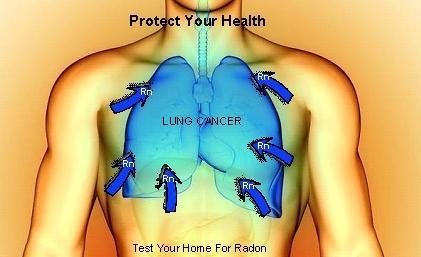
Research shows that the air within homes and buildings can be more polluted than outdoor air. The average person spends approximately 90% of their time indoors. A potential indoor air pollutant of concern is radon.
What is radon?
Radon is a colorless and odorless radioactive gas. It is formed during the breakdown of uranium, which is found in nearly all soils and rock. Radon ranks among the most serious environmental health problems facing our nation today.
How does radon get indoors?
High levels of radon in the soil are primarily responsible for indoor radon problems. Radon seeps into homes through gaps or cracks in the foundation floor or walls, sump pits, drains or other openings. Once confined in an enclosed space such as a home, it can accumulate to unhealthy levels.
What are the health risks?
The United States Environmental Protection Agency estimates that residential radon exposure is responsible for 7,000 to 30,000 lung cancer deaths per year. The Surgeon General has warned that radon is the second leading cause of lung cancer in the United States. Only smoking causes more lung cancer deaths. If you smoke and your home has an elevated radon level, your risk of lung cancer is especially high.
How do you find out if radon is a problem in your home?
Data indicates that in Macomb County approximately 5 - 10% of the homes will have elevated radon levels. Since radon is odorless and invisible, the only way to know if your home has a radon problem is to test for it. While supplies last, test kits are available at the Macomb County Health Department free of charge. Individuals must call ahead to reserve their test kit. The kits are only available at the Health Department’s Central Health Center in Mount Clemens located at 43525 Elizabeth Road. To reserve your test kit for pickup, call 586-469-5236 during our normal business hours of 8:30 a.m.- 5 p.m.
How to test with a kit from the Macomb County Health Department
- Follow the Radon Test Kit Placement & Retrieval Instructions provided with your test kit to record your name, full address, email address or fax number, and details on the time, date, and location of your test on your test kit. A link to the Radon Test Kit Placement & Retrieval Instructions is provided below.
- Hang the test kit at eye level for a minimum of 48 hours (two days) and no longer than four days in an appropriate location as described in the testing instructions.
- Follow the testing instructions to end the test, package the test kit, and send it to the address provided (express shipping is recommended).
- Complete Radon Test Kit Placement & Retrieval Instructions can be found here.
What can you do if your home has a radon problem?
A variety of methods are used to reduce radon levels in homes. The cost of making repairs depends on the design of your home and the extent of the radon problem. The average house costs about $1,200 to fix, although repairs can range from about $500 to $2500. Contact the Macomb County Health Department to obtain a list of contractors that have completed federal and/or state radon remediation training programs.
Additional resources
Questions?
Call us at 586-469-5236, weekdays, 8:30am-5:00pm or email us now.






